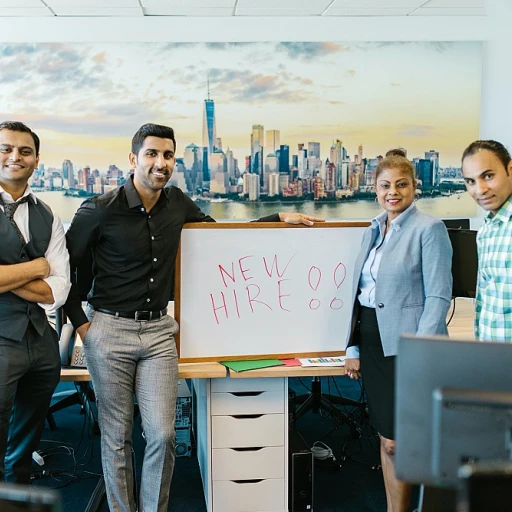
Defining the Member at Large Role
Unveiling the Member at Large Role in Organizational Structures
The role of a Member at Large is a distinctive and vital position within the landscape of organizational governance. Often found in various types of boards such as corporate, non-profit, or HOA (Homeowners Association) boards, this role ensures that diverse perspectives are represented in decision-making processes. A Member at Large is typically a board member elected by the community or organization that they serve. Unlike other board roles such as President, Vice President, or Secretary, which have clear specific duties, the Member at Large does not hold specific responsibilities tied to their title. Instead, they function as versatile representatives, often participating in broad organizational strategy and governance initiatives. Their role might encompass:- Attending board meetings and participating in voting on key issues, pressing matters, or special projects.
- Engaging with the community or membership to understand differing needs and concerns.
- Serving as a bridge between the board and the larger organization, ensuring that varied viewpoints are considered in board management discussions.
- Contributing their unique insights during board meetings, committees, or council sessions to facilitate comprehensive community representation.
Key Responsibilities of a Member at Large
Navigating the Responsibilities of a Member at Large
Becoming a member at large of a board or council presents a unique opportunity to contribute significantly to the governance and management of an organization. Although the role might seem generic, it encompasses several specific responsibilities that help facilitate effective board governance. One of the primary duties is representing the interests of the larger membership body. This is key in ensuring that the voices of all members, especially those in large communities like an HOA or an extensive organization, are heard and considered in decision-making processes. Member at large roles often include serving as a liaison between the membership and the board of directors, enabling a two-way flow of information and feedback. In HOA environments, members at large serve specific purposes that distinguish them from other board members such as the president, vice president, or secretary. They may be tasked with special projects or initiatives that require dedicated attention, thus allowing other board members to focus on their designated roles. By doing so, they help streamline board management and ensure that urgent community needs are addressed in a timely manner. Participation in committees is another important aspect of this role. Members at large can be involved in various committee activities, providing oversight and contributing insights based on their broader perspective. This involvement often aids in refining policies and procedures that govern the organization’s operations. Moreover, members at large possess voting rights identical to those of other board members. This positions them as crucial participants in shaping the future of the organization through well-informed decisions. It also requires them to be active in board meetings and stay updated on organizational developments. To proficiently execute these responsibilities, a member at large must be attuned to the community or organization's dynamics, demonstrating skills in communication, problem-solving, and organizational management. Such qualities are essential for fostering trust and ensuring a committed representation of the public served by the board, especially in diverse communities like those found in Florida. For those interested in diving deeper into the challenges and importance of fostering trust within any organizational role, Building Trust in Company Services: A Manager's Guide provides valuable insights on how trust can significantly impact organizational success.Importance of a Member at Large in Decision-Making
The Value of a Member at Large in Deliberative Processes
When looking into the decision-making processes across various organizations, including communities such as HOAs, the presence of a Member at Large can greatly enhance the dynamics and outcomes of these processes. Serving on boards, councils, or committees, these members are often less tied to specific roles and thus bring a wide perspective to discussions.
One of the critical aspects is that members large contribute a diverse array of ideas that may not align strictly with predefined agendas. This input can be particularly valuable during board meetings, where a fresh perspective helps uncover overlooked areas and encourage more rounded deliberation. Their involvement promotes a culture of open dialogue, thus enriching the governance and also the inclusivity of management practices.
Furthermore, these board members often provide a unique bridge between complex voting matters and real-world results. They ensure that perspectives from various segments of the organization, such as IT management or financial governance, are taken into account. For instance, a large HOA might benefit from including a Member at Large in its board management to address more specialized community concerns that typical roles such as the president or vice president may not focus on directly.
Interestingly, Members at Large often highlight and support requirements that emerge from evolving project dynamics. Their objective views facilitate the alignment of diverse ideas, fostering innovative solutions and effective governance actions. In this way, they hold a crucial place in ensuring the organization's long-term strategic direction aligns with both its internal capabilities and external community expectations.
Skills and Qualities of an Effective Member at Large
Essential Attributes for a Member at Large
In the landscape of management roles within large organizations, a Member at Large stands out due to their specific responsibilities and the unique perspective they bring to the board of directors. Effective Members at Large possess a dynamic set of skills and qualities that enable them to contribute significantly to board governance and decision-making processes.
Here are some of the key skills and qualities that make an effective Member at Large:
- Analytical Thinking: One of the primary responsibilities of Members at Large is to make informed decisions. This requires a strong ability to analyze data and assess different aspects of board management and organizational strategies.
- Communication Skills: As representatives on the board, these members need to articulate their views clearly during board meetings and discussions with other members large. Good communication helps in collaboration and helps ensure that the perspectives and interests of the community or organization are well represented.
- Experience and Knowledge: Members at Large often have a broad understanding of various aspects of management and governance, informed by diverse experiences. This includes familiarity with specific roles such as those in committees, voting procedures, and possibly previous roles like president secretary or vice president.
- Problem-Solving Abilities: Effective board members possess the aptitude to tackle complex issues that might arise during their tenure. As in any large organization, challenges are plentiful and problem-solving is key.
- Interpersonal Skills: Building relationships within the board and the wider organizational community is critical. Members at Large often coordinate with other board members like the hoa president and vice president, thus needing strong interpersonal capabilities.
- Adaptability: Adaptable members can effectively manage changes within the organization or community, adjusting strategies as needed to align with long-term goals.
These attributes are not merely beneficial; they are essential for Members at Large to fulfill their duties effectively. While each role and organization might have specific expectations, the versatility in skills allows Members at Large to navigate the nuanced challenges presented, ensuring they positively influence the organization's success.
Challenges Faced by Members at Large
Tackling the Complexities of the Member at Large Role
Being a member at large entails navigating a multifaceted environment, which frequently involves both unique challenges and opportunities. Their roles can vary significantly, depending on the organization's structure and the specific needs of the board. However, several common challenges consistently surface. One major challenge is the need for balance. Members at large serve as bridges between various internal groups and stakeholders. In a large organization, especially within an HOA or a council, the member often represents the broader community's voice. Balancing these different interests requires considerable diplomatic skill. Furthermore, members at large frequently shoulder the task of maintaining neutrality. While they aren't directly aligned with any specific department or committee, they must ensure that diverse perspectives are considered during board meetings. This role as an unbiased representative is crucial during decision-making processes, as it ensures that board directors can act based on comprehensive and impartial information. Members also confront the challenge of time management. Given their involvement in special projects and various committees, staying organized is imperative. Utilizing management software can aid in keeping track of responsibilities and voting activities. Without disciplined time management, it would be easy for a member's duties and specific roles to become overwhelming. Another challenge is acquiring a comprehensive understanding of governance and board management intricacies. In states like Florida, where regulations can be specific, members at large need to understand local governance laws and remain updated on changes that affect board activities and elections. Despite these challenges, the role of a member at large is integral to the success of any organization or board. By offering unique insights and acting as neutral representatives, they provide invaluable contributions to board management and governance. Their ability to navigate these challenges not only enhances their personal effectiveness but also broadens the board's capacity to serve its constituents.The Impact of a Member at Large on Organizational Success
The Influence of a Large Member on Organizational Prosperity
In the realm of board governance, a large member plays an influential role in steering the success of an organization. The presence of a member at large is pivotal, given their broad oversight role that supports strategic initiatives across the board. These individuals participate actively in board meetings and committees, contributing perspectives that enrich deliberations and policy formulation. Their specific roles also include serving as intermediaries between board directors and the larger community, ensuring that the hoa members' interests are duly represented and incorporated into decision-making processes. Key Areas of Impact:- Holistic Decision-Making: By considering diverse viewpoints, large members enhance the quality of decisions made by hoa boards. This ensures policies are inclusive and representative of broader community interests.
- Special Projects: They often take the helm in leading specific initiatives or special projects that require comprehensive insight and coordination across various stakeholders.
- Election Contributions: A member at large plays a crucial role in elections and governance processes. They often spearhead efforts to engage community participation, ensuring fair representation and transparency within the board.












